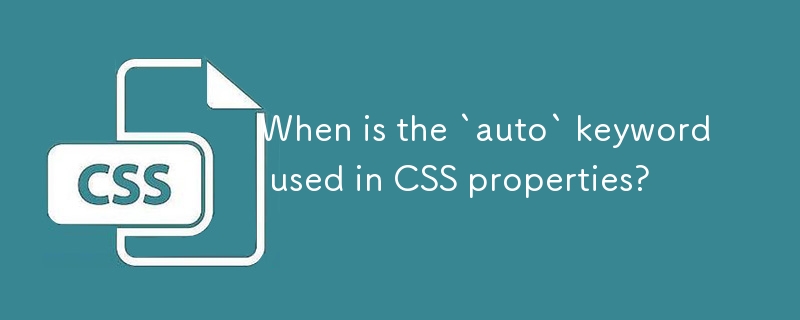Home >Web Front-end >CSS Tutorial >When is the `auto` keyword used in CSS properties?
When is the `auto` keyword used in CSS properties?
- Linda HamiltonOriginal
- 2024-11-03 04:14:30356browse

Understanding the Significance of auto Value in CSS Properties
In CSS, the auto value is a special keyword that signifies an automatic adjustment of a property's value based on the surrounding context and content. When a CSS property is set to auto, its value is determined dynamically rather than explicitly defined.
When is auto Used?
The auto value can be used with many CSS properties, including:
- Height and Width: When set to auto, the height or width of an element will expand or contract as needed to accommodate its content.
- Margin: The auto value for margins specifies that the left and right margins should be distributed equally, creating a centered element.
- Padding: Similar to margins, auto for padding distributes the left and right padding evenly.
- Flex Basis: In flexbox layouts, the auto value for flex-basis allows elements to grow or shrink to fill the available space.
How auto Works
The behavior of the auto value depends on the specific property it is applied to. For example:
- For height and width, auto sets the value to the natural height or width of the element's content.
- For margins and padding, auto adjusts the values to create a balanced or centered appearance.
- For flexbox layouts, auto allows elements to distribute their space dynamically based on the available space and the other elements in the layout.
Advantages of Using auto
The auto value provides several benefits:
- Flexibility: It allows elements to adapt their dimensions or positioning based on their content or context.
- Responsiveness: By adjusting values automatically, auto helps elements respond to changes in screen size or other visual conditions.
- Simplified Styling: Using auto eliminates the need to manually adjust values, making CSS code more concise and efficient.
The above is the detailed content of When is the `auto` keyword used in CSS properties?. For more information, please follow other related articles on the PHP Chinese website!

